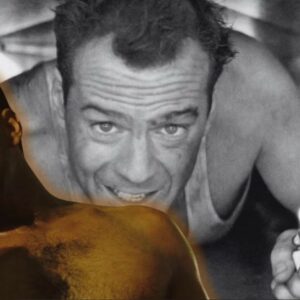The world of cinema is often filled with stories that resonate on a deeply personal level, and few films have captured the raw emotional depth of the human experience quite like The Lost Daughter. A powerful exploration of motherhood, desire, and self-discovery, this critically acclaimed film, based on Elena Ferrante’s novel, weaves a complex narrative that holds a mirror to the struggles many women face in balancing personal identity with the responsibilities of parenthood. At the heart of the film is Dakota Johnson, whose portrayal of the film’s central character, Nina, represents a pivotal moment in her career. Through her nuanced performance, Johnson brings an emotionally charged character to life, offering audiences a glimpse into the vulnerability and complexities of her role.
The Emotional Depth of The Lost Daughter
Directed by Maggie Gyllenhaal in her feature film directorial debut, The Lost Daughter is a rich tapestry of human emotion, weaving together themes of isolation, guilt, and the ongoing tension between self and others. The film follows Leda (Olivia Colman), a middle-aged woman who is reflecting on her life and her role as a mother during a summer holiday in Greece. While Leda’s story unfolds, she becomes entangled with Nina, a younger woman played by Dakota Johnson, whose own struggles with motherhood mirror Leda’s earlier life. As their paths intersect, the film explores the haunting and often painful choices that women face when they strive to reconcile their own desires with the demands of parenthood.
The emotional depth of The Lost Daughter is felt in every scene, from the quiet moments of self-reflection to the intense confrontations between characters. The film’s visual and narrative elements create a contemplative atmosphere that invites viewers to consider the complexities of love, sacrifice, and personal freedom. The beauty of The Lost Daughter lies in its ability to evoke strong emotions without resorting to melodrama, focusing instead on the subtleties of human relationships and the choices that shape us.
Dakota Johnson: A Career-Defining Performance
For Dakota Johnson, The Lost Daughter represents a significant step in her acting career, one that challenges the roles she is most known for and allows her to demonstrate a depth of emotional range that had yet to be fully realized. Best known for her role as Anastasia Steele in the Fifty Shades franchise, Johnson had largely been seen in more commercial or romantic roles. However, her performance in The Lost Daughter shows a new side to her acting abilities, one that is grounded, raw, and deeply introspective.
In the film, Johnson portrays Nina, a young woman who is struggling with the weight of motherhood while grappling with the loss of her personal identity. Nina’s complex character, marked by vulnerability and a quiet desperation, required Johnson to tap into a range of emotions that went beyond what she had done in her previous work. The role demanded a delicate balance between portraying Nina’s external beauty and the internal chaos she experiences.
Johnson has spoken about how the character of Nina felt like a departure from what she was used to portraying. Unlike the more glamorous or outwardly confident roles she had played before, Nina’s character required Johnson to embrace discomfort, portraying a woman who is disillusioned by her own choices. In an interview, Johnson revealed that the most compelling aspect of Nina’s character was the sense of being lost—lost in her motherhood, lost in her relationship, and lost in her sense of self. This feeling of being “lost” resonated with Johnson on a personal level, helping her to connect with the role on a much deeper level than she anticipated.
Behind the Scenes: A Collaborative Effort
One of the most remarkable aspects of The Lost Daughter is the sense of collaboration that permeates every aspect of its production. From the very beginning, director Maggie Gyllenhaal set the tone for a creative environment that emphasized mutual respect and open communication. Johnson’s experience working with Gyllenhaal, as well as with her talented co-stars Olivia Colman, Jessie Buckley, and Paul Mescal, is a testament to the film’s collaborative nature.
On set, Dakota Johnson recalls the environment as one of creative freedom. She speaks highly of Maggie Gyllenhaal’s direction, noting how the director created a space where the actors were encouraged to explore their characters freely. Gyllenhaal, who is also a writer and producer, worked closely with the cast to ensure that every scene felt authentic and true to the material. Johnson, in particular, appreciated Gyllenhaal’s willingness to allow the actors to make bold choices in their performances, which she felt helped her to push herself as an actor.
“One of the most beautiful things about Maggie as a director is her ability to create a space where everyone feels safe and supported, yet also encouraged to take risks,” Johnson remarked. “She’s not afraid to let things unfold naturally, which makes the work feel more alive.”
Johnson’s experience on set was made all the more rewarding by her interactions with the incredible ensemble cast. Olivia Colman, who plays the older version of Leda, was a particular source of inspiration for Johnson. The two actresses bonded over their shared commitment to telling a story about women’s lives that was both honest and unflinching. Johnson recalls many moments of deep conversation with Colman, whose wisdom and generosity helped guide her through some of the more challenging scenes.
Jessie Buckley and Paul Mescal, who portray other key characters in the film, also left a lasting impression on Johnson. The camaraderie between the cast members was palpable, and the bond that developed between them on set translated into authentic, powerful performances on screen.
Memorable Moments from the Set
There are certain moments from the filming of The Lost Daughter that stand out for Dakota Johnson, moments that speak to the heart of what made the project so special. One such moment occurred during a scene where Johnson’s character, Nina, has a vulnerable and raw exchange with Leda. Johnson recalls how the scene unfolded unexpectedly, with her and Olivia Colman improvising dialogue that wasn’t in the script. It was a moment of pure emotional truth, one that Johnson later described as one of the most powerful experiences she had on set.
“I’ll never forget that moment,” Johnson says. “Olivia and I were both so immersed in the scene, and we allowed ourselves to really let go and live in the emotion. It was one of those rare moments where everything just clicked, and you could feel the chemistry between us.”
Other memorable moments on set came in the form of small, impromptu exchanges between the cast. Dakota Johnson remembers laughing with Jessie Buckley and Paul Mescal between takes, and how those lighter moments helped to balance the film’s intense subject matter. “It was such a joy to work with such talented people who also had a sense of humor,” Johnson shares. “We really supported each other, and that made the whole experience even more rewarding.”
Reflections on the Film and Her Role
As the film received critical acclaim and resonated with audiences, Dakota Johnson took a moment to reflect on what the project meant to her both professionally and personally. She shared how grateful she was to have been a part of such a unique and emotionally fulfilling film, noting that The Lost Daughter allowed her to explore new territory as an actor.
“What I’ve learned from this experience is how important it is to trust the process,” Johnson says. “As an actor, it’s easy to get caught up in trying to control everything, but Maggie [Gyllenhaal] taught me that sometimes you just have to let go and let the story tell itself.”
Johnson also reflected on the broader themes of The Lost Daughter, particularly its exploration of motherhood. She explained that her own understanding of motherhood had evolved through her work on the film, acknowledging the complexities and contradictions that come with being a parent. “The film really made me think about how we often expect women to have it all together, when the reality is far more complicated. It was humbling to be a part of a project that tackled these issues with such honesty.”
Conclusion: A Career Milestone
In the end, The Lost Daughter is a film that succeeds not only because of its powerful script and direction but also because of the remarkable performances by its cast, particularly Dakota Johnson. Her portrayal of Nina is a career-defining moment, one that showcases her ability to take on complex, multifaceted roles with depth and authenticity. The film’s success is also a testament to the collaborative nature of the project, with Gyllenhaal’s direction and the chemistry between the cast members creating a film that resonates long after the credits roll.
Looking ahead, Dakota Johnson expressed her hopes that audiences will see the film for what it truly is: a bold and honest exploration of the intricacies of womanhood, motherhood, and self-identity. “I hope that people leave the film with a sense of empathy and understanding,” Johnson says. “And that they walk away thinking about their own lives and the choices they make. That’s the power of storytelling.”
In the years to come, The Lost Daughter will undoubtedly be remembered as a cinematic achievement, and Dakota Johnson’s portrayal of Nina will be regarded as one of the standout performances of her career.





